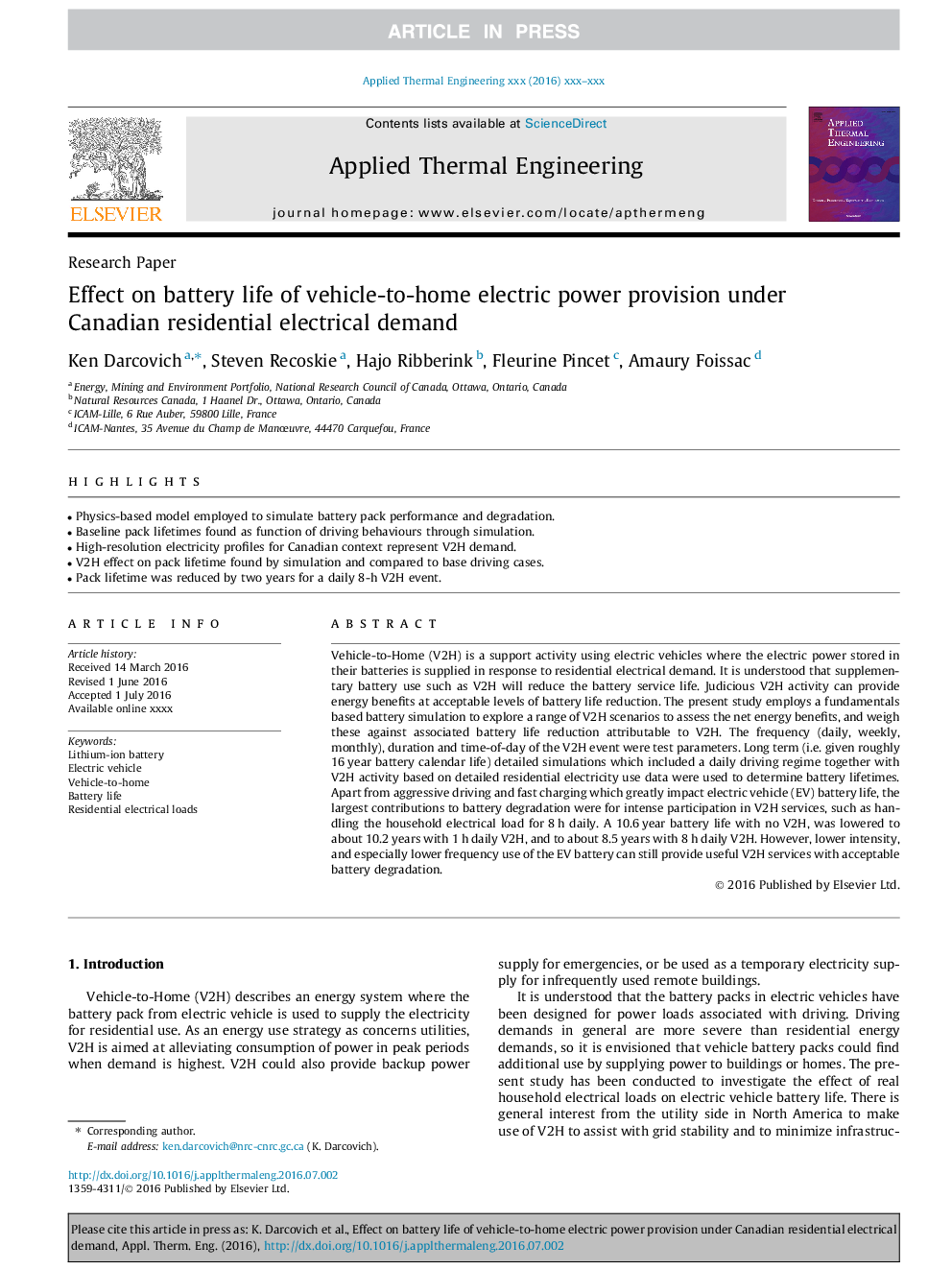ترجمه فارسی عنوان مقاله
تأثیر بر عمر باتری وسایل نقلیه به خانه در تامین برق در تقاضای مسکونی کانادایی
عنوان انگلیسی
Effect on battery life of vehicle-to-home electric power provision under Canadian residential electrical demand
| کد مقاله | سال انتشار | تعداد صفحات مقاله انگلیسی |
|---|---|---|
| 137591 | 2017 | 8 صفحه PDF |
منبع

Publisher : Elsevier - Science Direct (الزویر - ساینس دایرکت)
Journal : Applied Thermal Engineering, Volume 114, 5 March 2017, Pages 1515-1522
ترجمه کلمات کلیدی
باتری لیتیوم یون، خودرو الکتریکی، خودرو به خانه، عمر باتری، بار الکتریکی مسکونی،
کلمات کلیدی انگلیسی
Lithium-ion battery; Electric vehicle; Vehicle-to-home; Battery life; Residential electrical loads;

